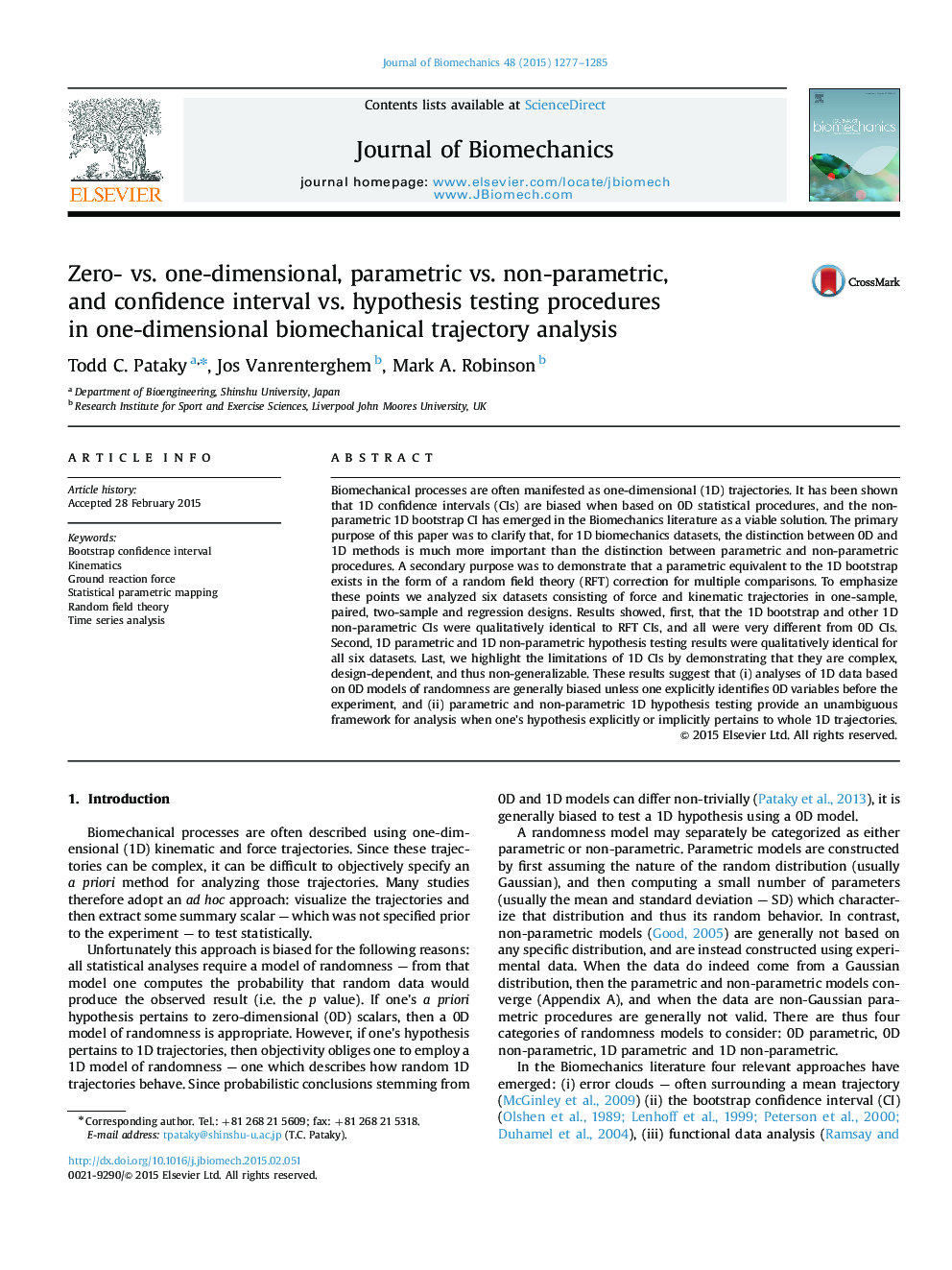| کد مقاله | کد نشریه | سال انتشار | مقاله انگلیسی | نسخه تمام متن |
|---|---|---|---|---|
| 871780 | 910199 | 2015 | 9 صفحه PDF | دانلود رایگان |
Biomechanical processes are often manifested as one-dimensional (1D) trajectories. It has been shown that 1D confidence intervals (CIs) are biased when based on 0D statistical procedures, and the non-parametric 1D bootstrap CI has emerged in the Biomechanics literature as a viable solution. The primary purpose of this paper was to clarify that, for 1D biomechanics datasets, the distinction between 0D and 1D methods is much more important than the distinction between parametric and non-parametric procedures. A secondary purpose was to demonstrate that a parametric equivalent to the 1D bootstrap exists in the form of a random field theory (RFT) correction for multiple comparisons. To emphasize these points we analyzed six datasets consisting of force and kinematic trajectories in one-sample, paired, two-sample and regression designs. Results showed, first, that the 1D bootstrap and other 1D non-parametric CIs were qualitatively identical to RFT CIs, and all were very different from 0D CIs. Second, 1D parametric and 1D non-parametric hypothesis testing results were qualitatively identical for all six datasets. Last, we highlight the limitations of 1D CIs by demonstrating that they are complex, design-dependent, and thus non-generalizable. These results suggest that (i) analyses of 1D data based on 0D models of randomness are generally biased unless one explicitly identifies 0D variables before the experiment, and (ii) parametric and non-parametric 1D hypothesis testing provide an unambiguous framework for analysis when one׳s hypothesis explicitly or implicitly pertains to whole 1D trajectories.
Journal: Journal of Biomechanics - Volume 48, Issue 7, 1 May 2015, Pages 1277–1285
